'My culture is my life, myself, my origin.' MVCC hosts annual International Festival
At Mohawk Valley Community College’s annual International Festival, the college’s snack bar was a whirlwind of bright colors and jubilant music.
On Wednesday afternoon, hungry attendees waited in a long line to sample sunshine-yellow orange agua fresca, various dumplings with dipping sauce, flaky spanakopita and homemade tortilla chips with four different types of salsa.
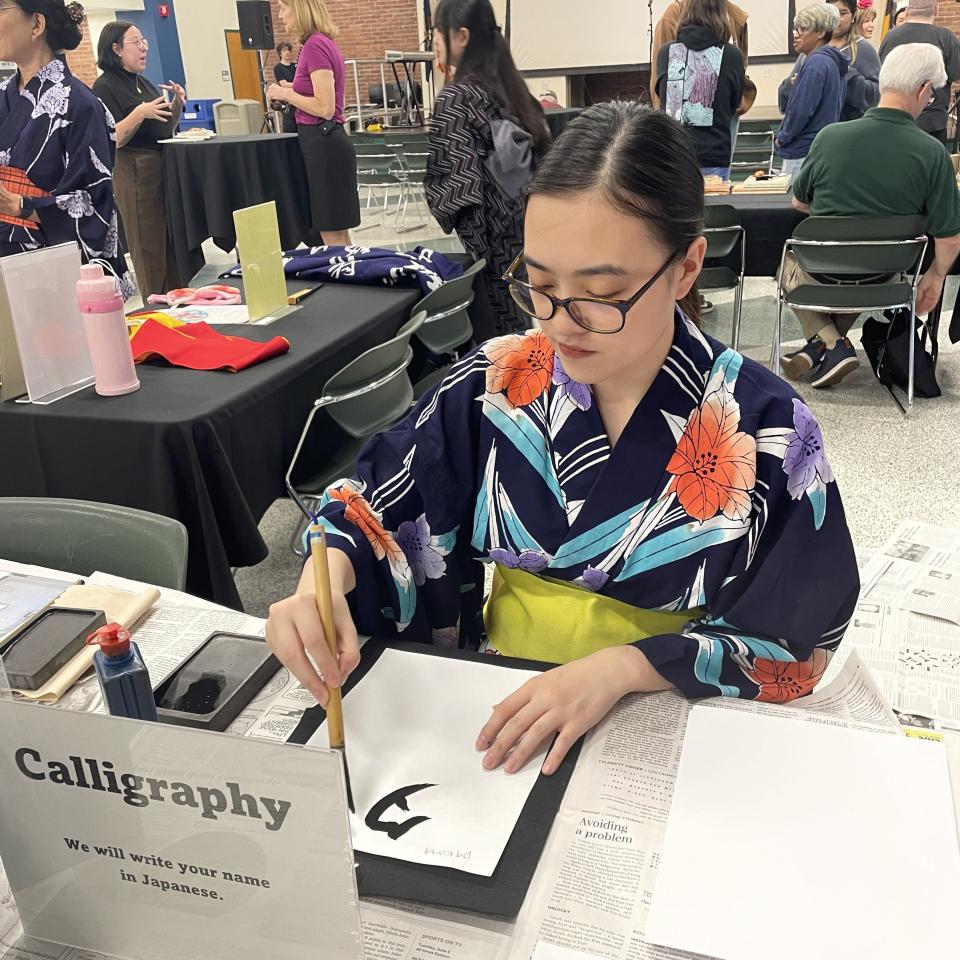
The vivid colors of traditional outfits from Tanzania, Japan, Burma and more swirled around the room. The romantic melody and lyrics of Spanish singer Vicky Corbacho’s song “Qué Bonito” rang out, all jangling guitars and Corbacho’s sweet, plaintive voice.
Emily Gifford, coordinator of international student services, said that she has 80 international students this year from 25 different countries and every continent but Australia and Antarctica. Gifford said that the festival is a great way to create connections between students.
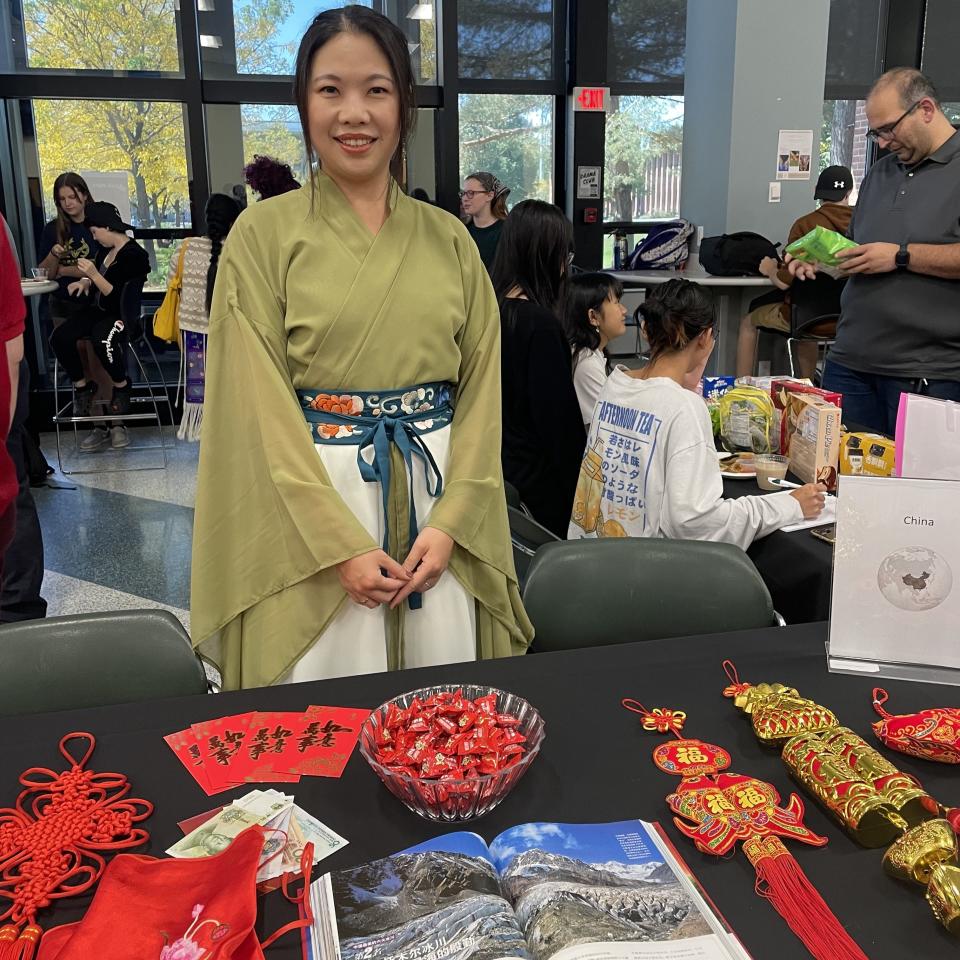
“Obviously, culture is such a deep concept, so this is just scratching the surface,” Gifford said. “But I think that this will hopefully open the idea that MVCC has all these diverse cultures, and they can connect with these people after and learn more if they’d like to. So I think it’s a way to spark friendship and a deeper understanding of different cultures.”
Cultural exchange
Students and community members set up tables in the Alumni College Center Snack Bar, wearing traditional garb and displaying cultural artifacts. The event included a flamenco dance presentation, a fashion show and a musical performance by a Burmese student.
Laurel Sonne, a local flamenco dance instructor, performed two traditional Spanish dances – the guajira and the sevillañas – alongside her student and dear friend Chie Wolicki. The women wore festively ruffled dresses dotted with bright flowers and snapped colorful fans in the air.
Wolicki is originally from Japan and was grateful to find a way to express herself through dance.
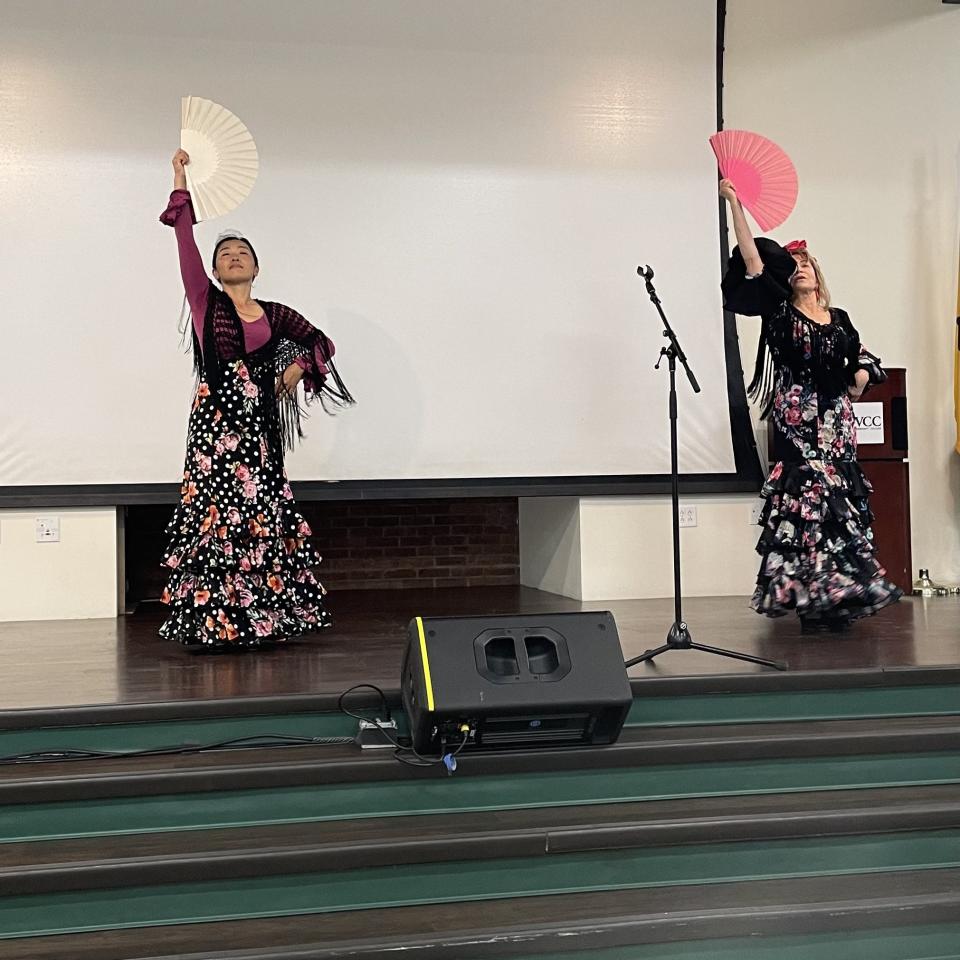
“Flamenco, it brings out ‘me.’ I’m usually quiet and shy, but flamenco helps me to show myself,” Wolicki said.
Sein Phone Oo, a computer science major from Myanmar, offered up samples of sticky rice balls stuffed with jaggery (a type of unrefined sugar made from sugar cane or palm) and tangy, spicy pickled oolong leaves. The Burmese students painted attendees’ faces with thanaka, a sunscreen made by grinding tree bark with a small amount of water on a circular slate slab.
The cosmetic has been used by the Burmese people for centuries to protect their skin from the beating sun.
Sein Phone Oo and another Burmese computer science student, Hsu Yati, wore longyi, long pieces of fabric wrapped around their waists. Sein Phone Oo said that they appreciated the opportunity to introduce fellow students and community members to their culture.
“Most of the people here do not know about our country, so we like to introduce them by giving our traditional food and wearing our traditional costumes,” Sein Phone Oo said.
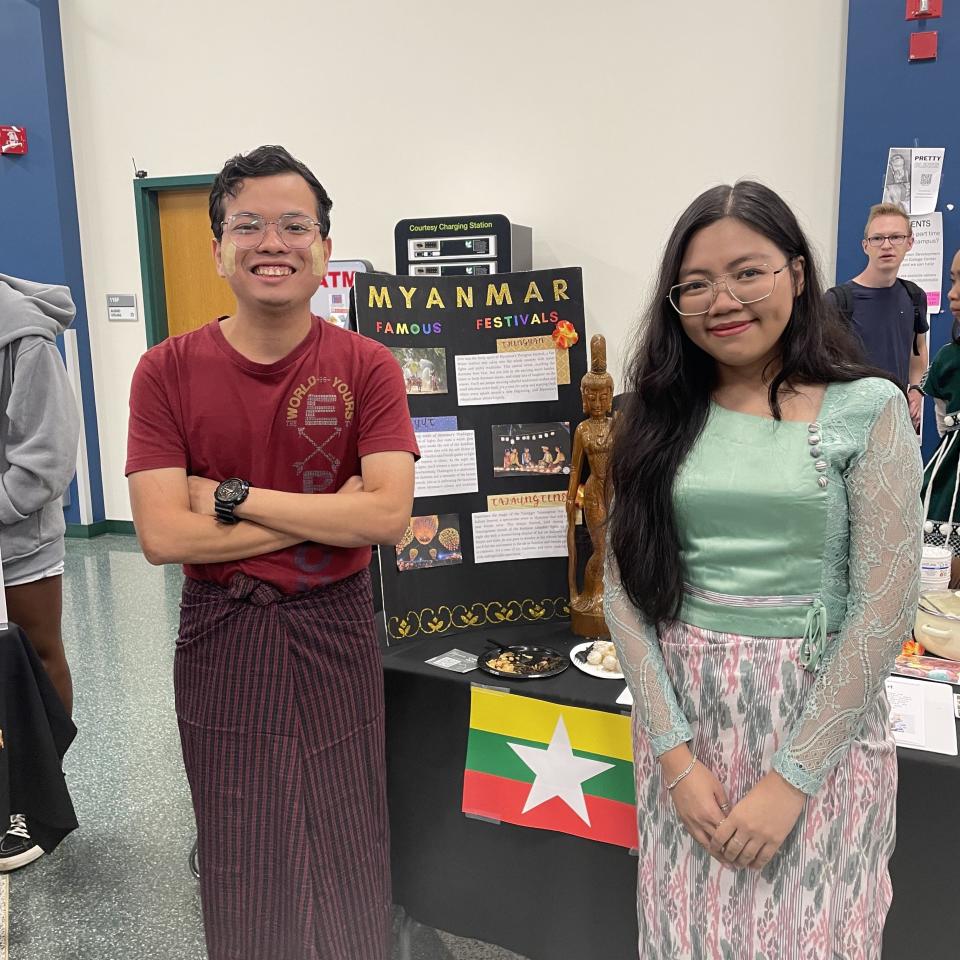
Students sold popular pan-Asian snacks like pocky and jelly strips in a joint fundraiser for MVCC’s International Club and its Asian Heritage Union.
Paw Htoo, a film student who was born in Thailand and raised in Myanmar, said that the Asian Heritage Union allowed students from across the continent of Asia to connect with one another.
“There’s a bunch of cultures, and we just dive deep into each one,” Htoo said. “And then we get to explore a little bit more about how their cultures interacted with each other back then.”
Htoo said that learning about and honoring the Burmese culture she grew up in is more important than ever in the context of the ongoing Myanmar civil war.
“The more people that die over there, the less we get to know about our culture,” Htoo said. “That’s why I want to learn more about it while it’s still alive.”
Fashion and passion
Japanese students and faculty wore yukata, a more casual summer-weight type of kimono, and showed attendees how to tie the garment. Manami Kishimoto, who is taking general studies courses, demonstrated writing guest’s names in Japanese calligraphy. She expressed the deep significance of her culture.
“My culture is my life, myself, my origin,” Kishimoto said.
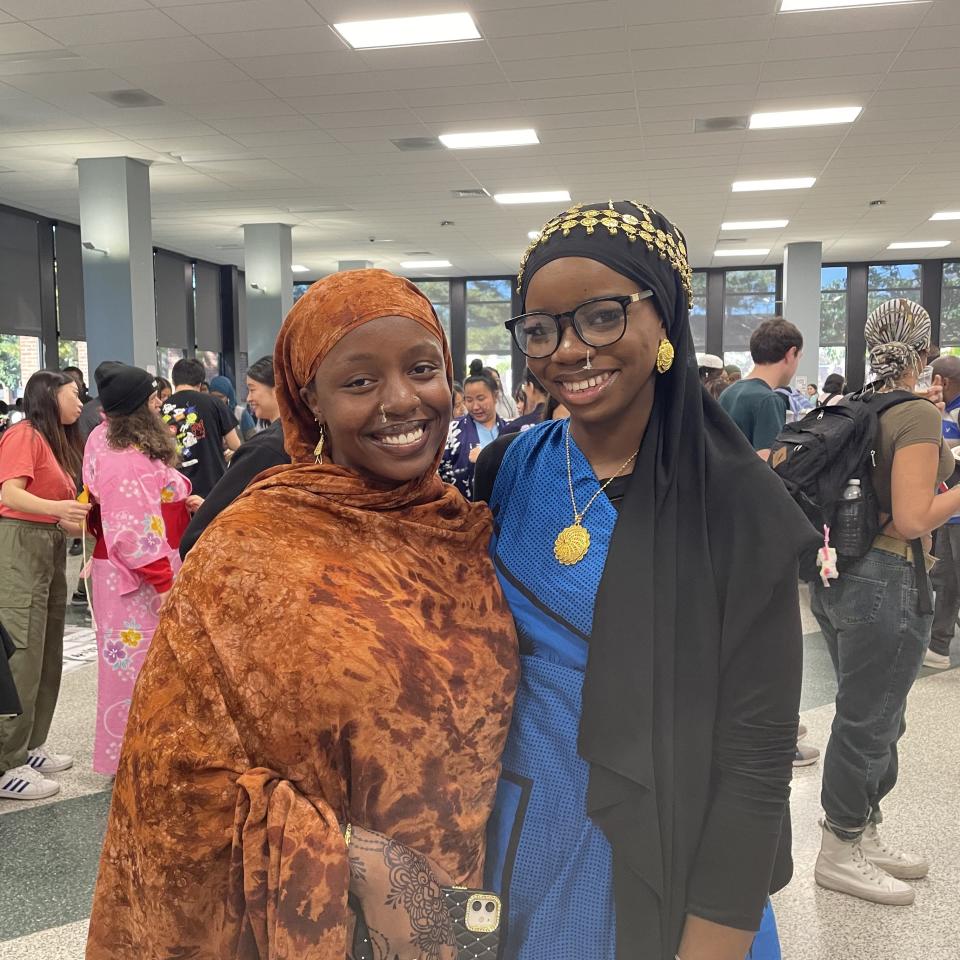
The fashion show was a joyous affair, with students proudly modeling yukata, longyi, and East African garments such as baatis, which originated in Somalia but became popular across the eastern side of the continent. Khadija Hassani, a student with Kenyan heritage who is studying business, loves expressing herself through traditional clothes like baatis.
“It looks very pretty, and we feel pretty in it,” Hassani said.
Hassani and other students like Faay Muuya, who comes from a Tanzanian family, displayed brilliantly colored and ornately decorated garments at the East African table. Muuya said that she was glad to participate in the festival.
“For me, it’s a chance for us to get recognized by everybody, because some people count Africa as a whole, but there’s a lot of different countries and cultures in one continent,” Muuya said. “So I feel like this is a chance for us to show our individuality.”
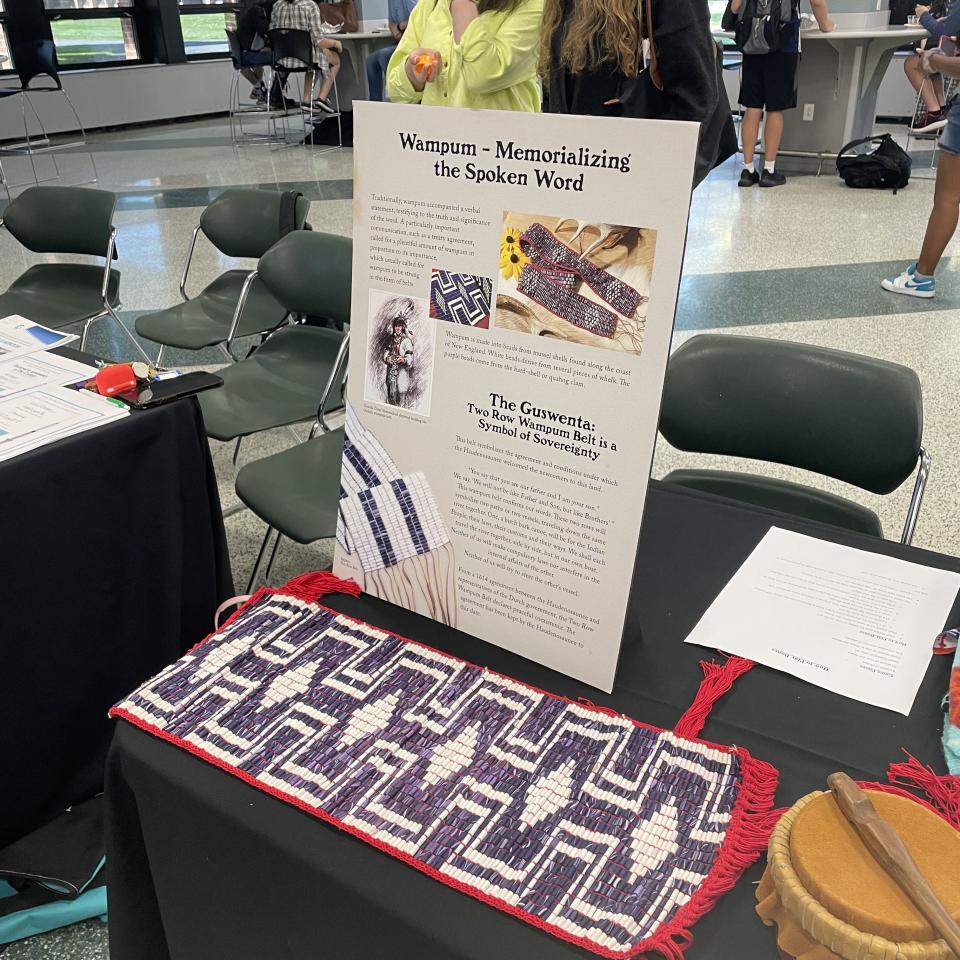
Jessica Farmer, the cultural programs coordinator for the Oneida Nation’s Shakowi Cultural Center, had a table with traditional musical instruments, toys and wampum. She explained that the blue-and-white beaded wampum was called the Oneida Belt or the Six Nations belt, and that it represented the inclusion of the Tuscarora Nation in the Haudenosaunee Confederacy.
“My culture means everything,” Farmer said. “It teaches us how to live our lives and how to treat people, and how we should be in the world and take care of everything. It’s very connected to the earth and connected to each other. Everything in our life revolves around our culture, everything we do.”
This article originally appeared on Observer-Dispatch: Mohawk Valley Community College hosts International Festival 2023

